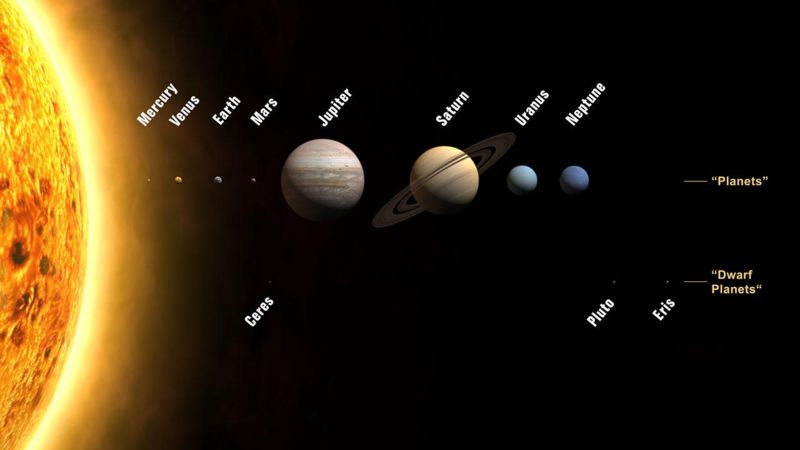This week has seen planetary scientists gathering in Madrid for the European Planetary Science Congress, and several exciting new findings have been reported.
Sun-shocks Shape Solar System
A series of stellar shockwaves seem to have been responsible for shaping our solar system.
 There are still a number of unanswered questions as to how our solar system actually formed, but a new model of activity in the newly formed Sun may help to explain why our planets formed where they did, and why.
There are still a number of unanswered questions as to how our solar system actually formed, but a new model of activity in the newly formed Sun may help to explain why our planets formed where they did, and why.
Dr Tagir Abdylmyanov, Associate Professor from Kazan State Power Engineering University modelled the clouds of gas from which the Sun formed, and hypothesises that a series of shockwaves would have sent ripples into the material. These rings of increased density would then go on to accrete and form the planets and asteroid belt. He argues that the planets would have formed in stages as solar activity changed, and that we should now be on the lookout for stellar shockwaves in star forming regions.
How did Vesta get its Water?
Data from NASA's Dawn mission, which studied the asteroid Vesta, suggest that we need to rethink our ideas of how the Earth got to be such a watery planet.
Using Dawn's Visible and Infrared Mapping Spectrometer, a team led by Maria Cristina De Sanctis of the Institute of Astrophysics and Space Planetology in Rome, showed that concentration of hydroxyl - a hydrogen and an oxygen atom bound together - was uneven, and not at all like the distribution found on the Moon.
On the Moon these water precursors are thought to be caused by the interaction of the solar wind with the lunar rock, while most of the hydroxyls on Vesta appear to have been delivered not by a continual drip-feed process, but by a rain of small particles of primitive, dusty material. This may have taken place at the solar system's formation, or during a fantastically violent time known as the late heavy bombardment.
The situation on Vesta is unlikely to be unique, so this result clearly tells us that a number of methods are responsible for delivering water around the solar system.
Pulsar Planets
Pulsars are very extreme stars; they're made up of the core that is left over after a supernova and spin rapidly, beaming radiation like a lighthouse. So it may seem very strange that at least two of them have been found to have their own planetary systems.
New research by Fabrice Mottez of the Paris Observatory may help us to find more of these, and to understand the conditions on these very strange planets. He says:
This electro-magnetic wake could be visible to us here on Earth, helping to spot more circumpulsar planets, but would also disturb supernova debris, as well as small bodies such as nearby asteroids and comets, helping to explain how these exotic systems can form.
- Previous Long-lived eunuchs
- Next Foetal DNA in Mum's Brain










Comments
Add a comment